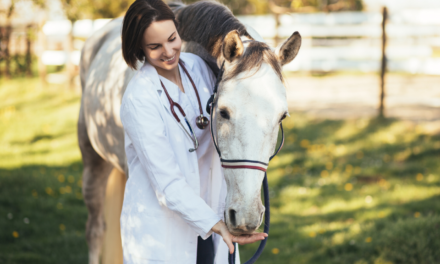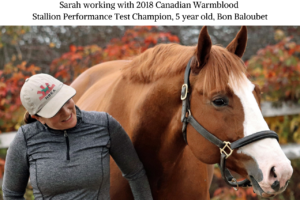We may earn money or products from the companies mentioned in this post. For more information please check out our disclosure page
Problems



Thoroughbreds have a bad reputation when it comes to their feet. I have heard many farriers comment on the poor quality OTTB hoof as being “typical” for a TB.
Having owned more OTTB’s than I can recall I can definitely relate to their frustrations although I have had plenty of OTTB’s with no hoof issues at all.
Many OTTBs will arrive at their new home with none, one, or more than one “typical” OTTB hoof issue.
1. Shelly feet – cracks appear and separate on the bearing surface of the hoof and is caused by too much exposure to moisture.
2. Thin sole – the hoof sole is the barrier for trauma. When the sole is thin it means horses are very sensitive to certain footing. This can be caused either through genetics or if a horse is nutritionally compromised. Talk to your farrier about various sole hardening solutions.
3. Flat footed – the horse walks on the sole, hoof wall and frog all at the same time. The hoof has lost its concave shape and flattened making it painful for the horse to walk on certain footing. Discuss the options for corrective trimming, shoes, and pads with your farrier.
4. Thin walls – when shoeing a thin-walled horse the nails can cause pain and discomfort when nailed into the thin hoof wall. Your farrier can advise you on the best course of action to take to compliment his treatment. In addition to possibly dealing with one or more of the above issues, you will also need your farrier to reshape your OTTB’s hoof in order for them to adapt to their new life.
Corrective Shoeing
Racehorses tend to be shod long in the toe and the heal is run under (the horse has little to no heal). This is likely the way your horse’s front hooves will look when it arrives. Working closely with a good farrier you can come up with a long term and short term plan to correct your horses’ feet.
Generally, this takes an extended period of time but if you read my blog ‘You Bought Your OTTB – Now What?’ you will know I advise turning your new OTTB out for 3 months.
Tell your farrier your plans and he may suggest that this downtime is an opportunity for your horse to go barefoot which will optimize stimulation, growth, and callusing of the sole.
At the same time, the farrier can work on correcting the long toe and underrun heal. My farrier, Joe Upshaw, has been faced with many challenges with all the OTTB’s we have asked him to fix.
In his words; “It is important in OTTB to have the foot gathered back and balance the HPA (hoof, pastern angle). Fit the shoe back to support the heels. In some cases barefoot for a while is very beneficial to allow the foot and move and expand to promote healthy hoof growth”
Nutrition and Supplements
Good nutrition can play an important part in the overall health of your horses’ hoof. Did you know when you change your horses’ diet you will see a horizontal line which travels down your horse’s hoof as it grows that shows when their diet was changed?
We use Hoffman’s Minerals and Hoffman’s Performance Minerals combined with Hoffman’s Feeds to ensure optimal nutritional balance for our horses and to aid in developing strong hoof growth. Hoffman’s has all the necessary additives built into its feeds to encourage healthy hooves.
When a hoof needs a boost we add extra Performance Minerals for a limited amount of time to give the horses system the help it needs to get going. We find that Hoffman’s feed system is enough for our horses, however, your farrier may suggest an additional supplement and the use of hoof oil to aid in recovery.
Our farrier uses Kevin Bacon hoof oil which I like, however, I LOVE and religiously use Fiske’s Hoof and Hide Balm!
The Story of Tango and the Benefits of Biotin
Both my farrier and I wish we had before an after pictures of Tango’s feet. When he arrived his feet weren’t great and need the usual corrections when getting an OTTB.
However, the change in footing (extreme wet, mud, to rock hard dry ground) caused him to develop abscess after abscess. During his first full summer with us, he developed large holes from abscesses which had blown out of the sides of his hoof walls. They were everywhere along with a few good cracks.
He went from a quiet well-mannered horse to being bad-tempered and difficult to handle. By the end of the summer, we decided to take his shoes off, put him on biotin, and turn him out for the fall/winter/spring giving him time to recover and let his hoof grow out and develop a healthy foot.
There are all types of expensive hoof supplements we could have given him, however, biotin from our local grain supplier was a cheap option and ended up being extremely successful. By the following spring Tangos’ feet were back to normal and he was back to his happy relaxed self. The change was remarkable, hence why we wish we had the before and after pictures.
He has not had an abscess since (2 years as of spring 2019) I have read a few articles about biotin and there seems to be a lack of up to date research. We avoid the expensive supplements and get incredible results for our horses that need it.
We maintain good hoof health by using an excellent mineral supplement by Hoffman’s Horse Feeds which covers all their mineral needs, not just hoof health. I will go into more detail about Hoffman’s in this blog.
admin
Latest posts by admin (see all)
- A Horse For All Reasons – Guest Blog by Lucy from Horse Factbook - April 8, 2020
- How To Deal With A Spooky Horse Trail Riding - March 31, 2020
- Our Top 20 Amazon Equestrian Products - January 30, 2020







